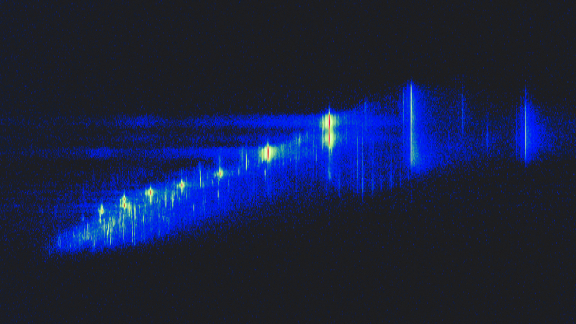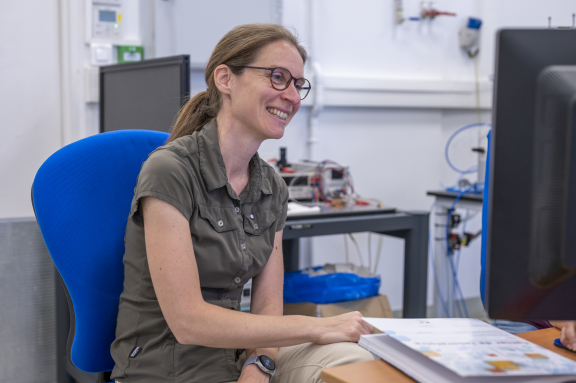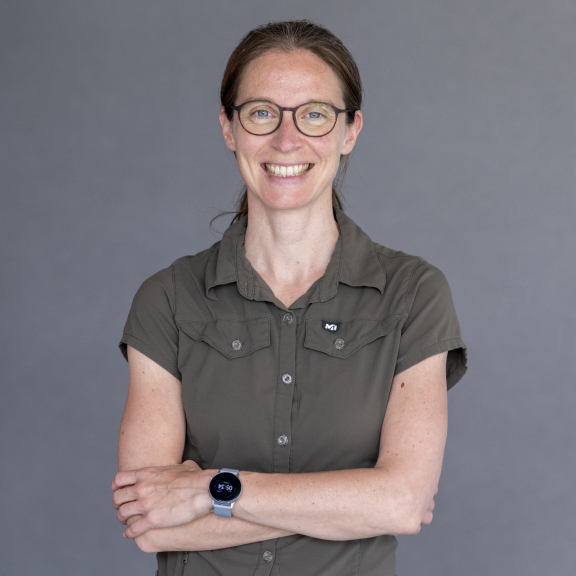Valérie Gabelica Building tools to measure living molecules
Valérie Gabelica, Inserm research director, head of the "nucleic acid and supramolecular complex mass spectrometry" team “Nucleic Acids: Natural and Artificial Regulation" laboratory (ARNA) at the European Institute of Chemistry and Biology - Pessac (Gironde)
- 2021 • Liliane Bettencourt Prize for Life Sciences



Valérie Gabelica develops measuring tools that can be used in all disciplines studying nucleic acids. They analyze the chemical changes regulating the functions of DNA and RNA.
No science without measurements
Why, in the same organism, is a retina cell so different from a liver cell? Both have the same DNA in their nucleus, inherited from their parents. The cells of different organs have such distinct shapes and functions because, among other things, of chemical changes that attach to the DNA and RNA. These chemical changes are very diverse. Existing analytical methods struggle to map them all. To solve this problem, Valérie Gabelica develops, adapts and pushes back the limits of a cutting-edge technology: mass spectrometry, which accurately measures the mass of molecules to determine their composition.
Staying in shape
In addition to going through chemical modifications, the nucleic acids that make up DNA and RNA can fold in relation to each other in various serpentine forms. Most existing analytical methods distort these forms, causing researchers to lose valuable information. Valérie Gabelica aims to keep the context, and thus the shape, of the DNA or RNA sequence where the change is found. She has developed protocols to analyze nucleic acids under conditions as close as possible to in vivo so that they keep the shape they had in the cell.
Such technical improvements reveal the spatiality of chemical changes, thus allowing cells that cooperate with each other to be identified. Mapping this synergy could open up therapeutic avenues unimaginable today.
The Liliane Bettencourt Life Sciences Prize funds extremely promising projects to develop targeted therapies in Dr. Gabelica's laboratory.
One of them targets oncogene promoters, small DNA sequences that are strongly linked to cancer. Oncogene promoters undergo chemical and structural changes that Dr. Gabelica will analyze with the tools she develops. The promoters are potential targets for more effective cancer drugs with fewer side effects.
Valérie Gabelica in a few words
Valérie Gabelica is mainly a chemist. For her PhD, from the University of Liege in 2002, she already used mass spectrometry to analyze structural changes in nucleic acids in response to drugs. Shortly after joining the European Institute of Chemistry and Biology (IECB) in Pessac in 2011, she demonstrated that the mass spectrometer compacts RNA and DNA. This was a revolution. All the research based on this technology, which until then had been thought to have no effect on the molecules’ structure, had to be reinterpreted. Appointed head of the Bordeaux institute in 2021, she is now considered the pioneer of nucleic acid mass spectrometry. She is also recognized for her contributions to physical chemistry, biophysics and molecular biology. She continues to develop trailblazing technological approaches for the entire scientific community.

Liliane Bettencourt Prize for Life Sciences
The Liliane Bettencourt Prize for Life Sciences rewards each year a researcher under the age of 45 for the excellence of their work and their remarkable contribution to their field of scientific research. This prize is awarded, depending on the year, to a researcher based in France or working in another European country. Thirty winners have been awarded since 1997. From 2023, prize rewards the laureate up to 100,000 euros.
All the award-winners






